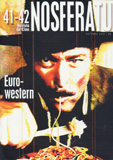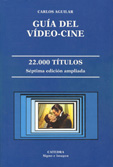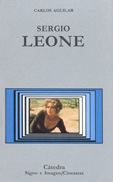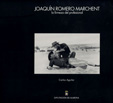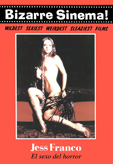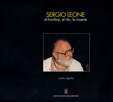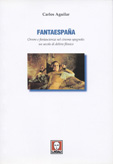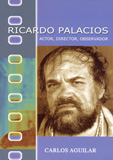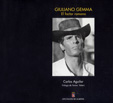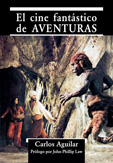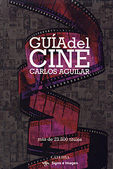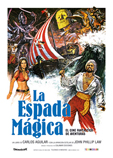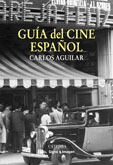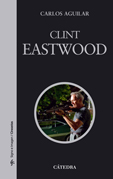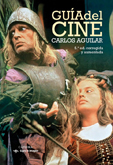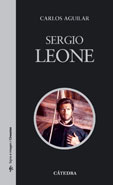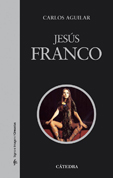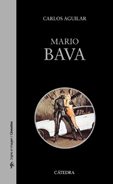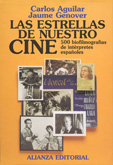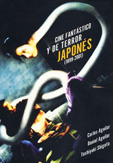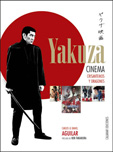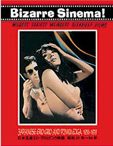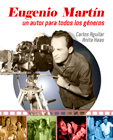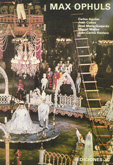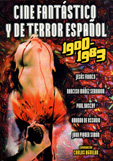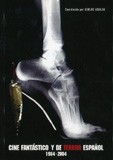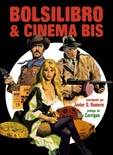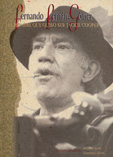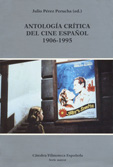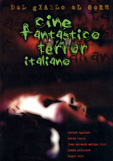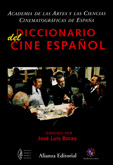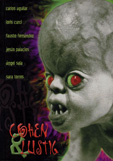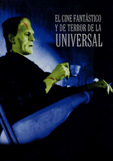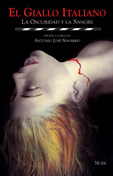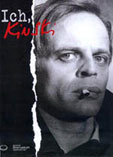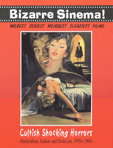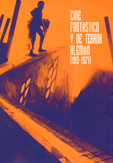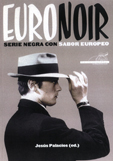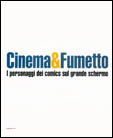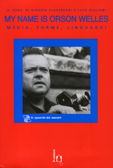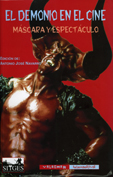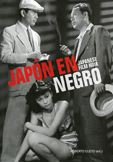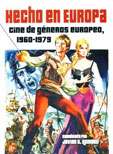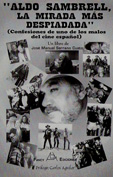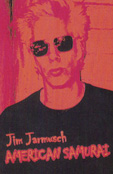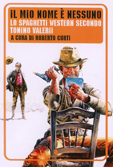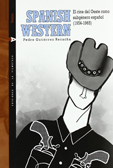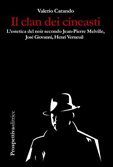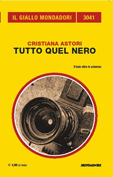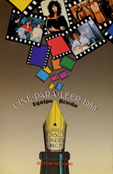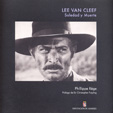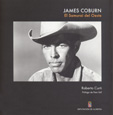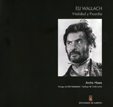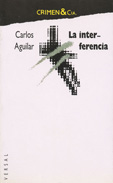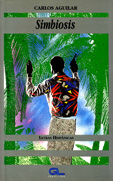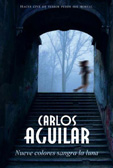carlosaguilar
Biografía Biography
Obra Works
Premios Awards
Bibliografía Bibliography
Fotos Photo Gallery
Contacto Contact
Enlaces Links
www.carlosaguilar.net
Works
Main cinema magazines in which Aguilar collaborates or has collaborated
a) Staff Editor: Video Actualidad (Spain), Cine Nuevo (Spain)
b) Collaborator: Casablanca (Spain), Cineinforme (Spain), Cuadernos de la Academia (Spain), Nickel Odeon (Spain), Quatermass (Spain), Visión 3 (Spain), Fotogramas (Spain), Nosferatu (Spain), Mad Movies (France), The Bat (France), Monster Bis (France), Schnitt (Germany), Bianco e Nero (Italy), Cabiria (Italy), Nocturno Cinema (Italy), El Rapto de Europa (Spain) y Cine-Bis (Spain)
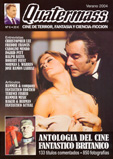
Other Main Publications
Total (Spain), La Luna de Madrid (Spain), Penthouse (Spain), Primera Línea (Spain), Creación (Spain), Contrastes (Spain), Diario 16 (Spain), ABC (Spain)
Books Published
a) Cinema
As sole author:
Gran enciclopedia del Video Cine (Spain, 1985). Ed. Crisis
Guía del Video Cine (Spain, 1986). Ed. Cátedra
Dictionary of over 22,000 films with fundamental information and commentary, plus index of directors and original titles. It deals with films of all periods, types and countries. It is the most successful Spanish book about cinema.Text in Spanish.
Sergio Leone (Spain, 1990; 1999, 2º ed.). Ed. Cátedra
Analysis of the cinema of Leone. It describes his professional career and personal development. Includes statements by Leone, observations about his work, and studies of every one of his films in detail. Includes filmography and biography. Now in its second edition. Text in Spanish.
Viendo cine, hablando de cine (Spain, 1993). Ed. Films 210 Joaquín Romero Marchent. La firmeza del profesional (Spain, 1999). Ed. Diputación de Almería
In-depth interview with this director, pioneer of the European Western, with an essay on his career, and filmography. The only book written about this director. Text in Spanish.
Jess Franco. El sexo del horror (Italy, 1999). Ed. Glittering Images
The life and works of one of the essential directors of European genre films and of B movies worldwide. Includes interview, bibliography and filmography. The second book published on this director. Prologue by one of his characteristic actors, Jack Taylor. Text in English and Italian.
Sergio Leone. El hombre, el rito, la muerte (Spain, 2000). Ed. Diputación de Almería
Readaptation of the book Sergio Leone, with more information and images. Published for the tribute to Leone in Almeria directed by Aguilar, which included the naming of a street in honour of Leone. Text in Spanish.
FantaEspaña (Italy, 2002). Ed. Lindau
A study of Spanish Fantasy and Horror cinema, from it´s origins to 2002, through all its stages, films and directors. Includes bibliography. Published for the retrospective by Aguilar organized in the Festival della Fantascienza de Trieste. Text in Italian.
Ricardo Palacios. Actor, director, observador (Spain, 2003). Ed. Festival de Santander
In-depth interview with one of the most important Spanish genre actors of the sixties and seventies in Europe, who worked as a director as well. The book includes an essay, filmography and biography. The only book written about this professional. Text in Spanish.
Giuliano Gemma. El factor romano (Spain, 2003). Ed. Diputación de Almería
In-depth interview with one of the greats of European genre cinema of the sixties and seventies. Includes an essay, filmography and bibliography. The second book published about this actor, and the first in Europe. Includes a prologue by the director Tonino Valerii, director of the two best westerns starring Gemma. Text in Spanish.
El cine fantástico de aventuras (Spain, 2004). Ed. Semana de Cine Fantástico de Málaga
A detailed study of the Fantasy genre from silent films to the year 2003. It covers Greek and Roman as well as Central European mythology, lost worlds, Oriental Fantasy, Heroic Fantasy, Sword and Sorcery, Asian cinema, and a chapter on Ray Harryhausen. Includes a proloque by the actor John Phillip Law, the best Sinbad in the history of cinema. Text in Spanish.
Ray Harryhausen. Y el Sueño se hizo Fantasía (Spain, 2004). Ed. Museo de Bellas Artes de Bilbao Guía del Cine (Spain, 2004). Ed. Cátedra
Second edition corrected and expanded, 2006.
Dictionary of over 23,500 films with fundamental information and commentary, plus index of directors and original titles. It deals with films of all periods, types and countries. It is the most successful Spanish book about cinema.Text in Spanish.
La Espada Mágica. El cine fantástico de aventuras (Spain, 2006). Ed. Calamar Ediciones
Revised, corrected and adapted (in both text and images) version of El Cine Fantastico de Aventuras . A luxurious book with over three hundred colour illustrations (photos, posters, portraits, paintings, comics, novels etc. ) with a prologue by the cult actor John Phillip Law. Text in Spanish. A finalist for the prestigious prize, Ignotus.
Guía del cine español (Spain, 2007). Ed. Cátedra
Monumental dictionary which includes all Spanish films, both fiction and documentary, since 1897, with fundamental information and commentary. Contains over 500 illustrations (photos, posters, etc), indexes of all the professionals (directors, actors, screenwriters, musicians, etc), a historical essay and a bibliography with over 800 references. Text in Spanish.
Clint Eastwood (Spain, 2009). Ed. Cátedra
An essay which unites both a historical biography, and a cinematographic analysis, covering all the phases of Eastwood’s life and work, up to and including Gran Torino. Complete filmography, international bibliography and nearly sixty photos. Text in Spanish.
Guía del Cine (5th ed., Spain, 2013). Ed. Catedra.
Revised and updated third edition. Also has an index of director’s, with a list of that director’s films which appear in the volume. Text in Spanish.Sergio Leone (Spain, 2009). Ed. Catedra.
The author’s third book on the Roman director. Richer and more enhanced than the other two in every sense. Full of largely never seen before images, and lots of new information and discoveries from multiple sources and countries. Includes an extensive bibliography both directly on Leone and indirectly on his colleagues and the European Western in general. Text in Spanish.Jesus Franco (Spain, 2011). Ed. Catedra.
A thorough investigation into the life and work of the number one Spanish cult movie director, including copious amounts of information about the professionals involved in his work, such as the actress Soledad Miranda, the actor Howard Vernon, and the producer Harry Alan Towers. It contains a filmography, bibliography, and nearly ninety photos. Text in Spanish.Mario Bava (Spain, 2013). Ed. Catedra.
The first Spanish book on the great Italian director, Mario Bava, creator of two enormously transcendental styles in film history; Italian Gothic, and the Giallo. The book covers his life and work, including testimonies from a multitude of those who worked with him. It contains a filmography, bibliography and nearly seventy photos. Text in Spanish.Cine y Jazz (Spain, 2013 2nd edtion 2014) Ed. Catedra.
The relationship between film and jazz from the beginning of the twentieth century to the present, presented through a multitude of entries describing film, documentaries, directors, composers, musicians, albums etc., with a prologue explaining the esthetic and chronological evolution of this relationship. A special edition with nearly five hundred illustrations in both colour and black and white. The success of this book resulted in a second edition only one year after its publication. Text in Spanish.
Co-Autor:
El cine español en sus intérpretes (Spain, 1992). With Jaume Genover. Ed. Verdoux Las estrellas de nuestro cine (Spain, 1996). With Jaume Genover. Ed. Alianza
Dictionary of the 500 most important actors in the history of Spanish cinema starting with the silent era. Each entry includes biographical details, a career description, filmographies, awards received and a photo. One of the best-selling reference books on Spanish cinema. Received the grant " 100 Años de Cine". Text in Spanish
Cine fantástico y de terror japonés. 1899-2001 (Spain, 2001). With Daniel Aguilar and Toshiyuki Shigeta. Ed. Semana de Cine Fantástico de San Sebastián
In-depth study of the art and history of a century of Japanese Fantasy and Horror cinema, through all its diverse periods and styles. Includes interviews with several professionals, filmography, and bibliography. A finalist for the prestigious Spanish award "Ignotus". Text in Spanish.
Yakuza cinema. Crisantemos y dragones (Spain, 2005). With Daniel Aguilar. Ed. Calamar Ediciones.
First book of yakuza eiga appeared in Europe. A concientious and profuse carried out investigation by the authors directly in Japan throughout several years. Prologue by the mythical Actor Takakura Ken. Text in Spanish.
Japanese Ero Gro (Spain, 2005). With Daniel Aguilar. Ed. Glittering Images
The main styles of pre-Hard Core Japanese Erotic Cinema (Ero Gro, Pinku Eiga, Roman Porno). Prologue and epilogue by the directors Seijun Suzuki and Teruo Ishii, and a short memoir by the mythical actress Naomi Tani, the production house Nikkatsu's Queen of Masochism. Text in English and Italian.
John Phillip Law. Diabolik Angel With Anita Haas. Ed. Scifi World/Quatermass (Spain, 2008).
Biography of the legendary cult actor John Phillip Law, composed of a long and honest interview, which investigates all aspects of both his personal and professional life, with filmography and bibliography. An extraordinary and glamorous book, in color and black and white, prologue by the great Ray Harryhausen. Text in English and Spanish.
Eugenio Martín. Un autor para todos los géneros. With Anita Haas. Ed. Séptimo Vicio. (Spain, 2008).
?The first book on this unique Spanish director, it includes a critical essay, an extensive interview, a selection of Martín’s own texts, a complete filmography, an essential bibliography, and an abundance of images, the majority never published before. Text in Spanish.
As editor and author in collective works:
Max Ophuls (Spain, 1987). Ed. JC
A collective work analyzing the life and all aspects of the career of Max Ophuls. Aguilar´s contribution consists of the coordination of the book, an extensive review of Lola Montes, and the prologue. Text in Spanish.
Cine fantástico y de terror español. 1900-1983 (Spain, 1999). Ed. Semana de Cine Fantástico de San Sebastián
A collective work examining the first eighty years of Spanish Fantasy and Horror cinema, including one general essay and five specific essays, as well as interviews on the directors Jesus Franco, Paul Naschy, Narciso Ibañez Serrador, Amando de Ossorio y Juan Piquer. Aguilar coordinates the book and contributes the general essay, filmographies and bibliographies. Text in Spanish.
Cine fantástico y de terror español. 1984-2004 (Spain, 2005). Ed. Semana de Cine Fantástico de San Sebastián
The continuation of Cine fantástico y de terror español. 1900. 1984. Aguilar's contributions are the main article, the filmography, the bibliography and the review of El espinazo del diablo. Text in Spanish.
Bolsilibro & Cinema Bis (Spain, 2012). Ed. Ayuntamiento de Gijón
A collective work about European cinema which was inspired by popular literature. It is coordinated and designed by Javier G. Romero. Aguilar’s articles are about the characters Jerry Cotton and Lemmy Caution, and the film adaptions of author José Mallorquí’s work.
Collaborator in collective works:
El campo en el cine español (Spain, 1987). Ed. Banco de Crédito Agrícola Speelfilm (Holland, 1992). Ed. Rostrum Fernando Fernán Gómez. El hombre que quiso ser Jackie Cooper (Spain, 1993). Ed. Donostia Kultura
A collective work on one of the most brilliant Spanish personalities (cinema, theatre, television, journalism, literature). Analyzes all aspects and facets of his career. Aguilar´s contribution includes a description based on the points of view of several of Gomez´s colleagues. Text in Spanish.
Obsession. The Films of Jess Franco (Germany, 1994). Ed. Frank Trebbin
El bazar de las sorpresas (Spain, 1995). Ed. Festival de San Sebastián Conocer a Eloy de la Iglesia (Spain, 1996). Ed. Filmoteca Vasca Antología crítica del cine español (Spain, 1997). Ed. Cátedra
A collective work comprised of detailed reviews of the most interesting Spanish films of the twentieth century, ranging from the most prestigious to the little known. Includes ten reviews by Aguilar on films so varied as the comedy Los dinamiteros, the western Antes llega la muerte, the thriller A sangre fría, the drama Las salvajes en Puente San Gil, the sci-fi film El sonido de la muerte, and the experimental film Arrebato. Text in Spanish.
Richard Fleischer. Entre el cielo y el infierno (Spain, 1997). Ed. Festival de Gijón Del Giallo al Gore. Cine fantástico y de terror italiano (Spain, 1997). Ed. Semana de Cine Fantástico de San Sebastián
A collective work which includes two general essays and studies on the directors Dario Argento, Pupi Avati, Mario Bava, Lucio Fulci and Michele Soavi. Aguilar´s contribution consists of the filmography and bibliography. Text in Spanish.
Diccionario del cine español (Spain, 1998). Ed. Alianza
A collective work detailing the most important professionals of all areas throughout the history of Spanish cinema. Includes biographical information, a description and essential filmography. Aguilar´s contribution includes numerous references about directors and actors. Text in Spanish.
Cohen & Lustig (Spain, 1998). Ed. Semana de Cine Fantástico de San Sebastián
A collective work with articles and interviews about the American directors Larry Cohen and William Lustig. Aguilar´s contribution consists of the filmography and bibliography. Text in Spanish.
FX (Spain, 1999). Ed. DFX Descubriendo a "Los sin nombre" (Spain, 2000). Ed. Filmax
Las generaciones del cine español (Spain, 2000). Ed. España Nuevo Milenio El cine fantástico y de terror de la Universal (Spain, 2000). Ed. Semana de Cine Fantástico de San Sebastián
A collective work about the splendour of the Fantasy and Horror genre in the production company Universal, from the silent era to the end of the forties. Aguilar´s contribution consists of the bibliography and the review of the film The Old Dark House . Text in Spanish.
En torno al Free Cinema (Spain, 2001). Ed. Festival de Gijón
El Giallo italiano (Spain, 2001). Ed. Nuer
A collective work about "giallo" or Italian thriller of the sixties and seventies. Aguilar´s contribution consists of an essay on literary references and a review of the films Sumario sangriento de la pequeña Stefania, and El día negro. Text in Spanish.
Ich, Kinski (Germany, 2001). Ed. Deutsches Filmmuseum
A collective work on the German cult actor Klaus Kinski. Includes all phases and aspects of both his personal and professional life, a bibliography and filmography. Aguilar´s contribution consists of an analysis of Kinski´s genre films from the sixties and seventies. Text in German.
Diccionario do cine en Galicia (Spain, 2002). Ed. Filmoteca Gallega
La filosofía y el cine (Spain, 2002). Ed. Verbum Cultish Shocking Horrors (Italy, 2002). Ed. Glittering Images
A collective work analyzing a selection of very specials Horror films from the fifties and sixties, including bibliography. Aguilar writes about the Mexican film El mundo de los vampiros, the Spanish film Gritos en la noche, and the British film Circus of Horrors. Text in English, Italian, and French.
Cine fantástico y de terror alemán. 1913-1927 (Spain, 2002). Ed. Semana de Cine Fantástico de San Sebastián
A collective work analyzing films, professionals and themes in the Expressionist Period of German cinema. Aguilar´s contribution consists of a review of Nosferatu, an essay on the writer Hanns Heinz Ewers, and the bibliography. Text in Spanish.
Intérpretes europeos del cine mudo (Spain, 2003). Ed. Filmoteca Canaria
Filmgenres: Horrorfilm! (Germany, 2004). Ed. Reclam EuroNoir. Serie negra con sabor europeo (Spain, 2006). Ed. T&B/Festival de Las Palmas.
The history of European thriller movies, through different authors, styles, and tendencies. Aguilar has three essays: the Krimi , or German thriller movies based on Edgar Wallace; the literary sources of the Giallo , or Italian thriller-Horror movies; and a selection of observations by the French director Jean-Pierre Melville. Text in Spanish.
Cinema & Fumetto (Italia, 2006). Ed. EsaExpo
A journey through the relationship between cinema and comic throughout the century, which analyzes all sorts of representative personalities from both America and Europe. Carlos Aguilar's text is on Tex e il signore degli abissi, a film about the fumetto Tex. Text in Italian.
Miradas para un nuevo milenio. Fragmentos para una historia futura del cine español (Spain, 2007). Ed. Festival de Alcalá de Henares. My Name is Orson Welles (Italy, 2007). Ed. Il Castore
A collective work on Orson Welles, containing contributions of experts from various countries (United States, Italy, France, Finland, Spain, etc). Aguilar's part deals with Welles's influence on some aspects of European genre films, reflected in tributes, irony, copying, etc. Text in Italian.
.
American Gothic (Spain, 2007). Ed. Semana de Cine Fantástico de San Sebastián El demonio en el cine (Spain, 2007). Ed. Valdemar/Festival de Sitges
An analysis of the different cinematographic manifestations of the devil during a century of film, through essays which examine the theme from its cultural, artistic and anthropological origins. Aguilar's articles look at satanism in Spanish and Italian Cinema. Text in Spanish.
Japón en negro. Ed. Festival de San Sebastián (Spain, 2008).
Japanese Thrillers throughout the 20th century, with a series of articles covering all different aspects. Aguilar’s part is co-written by his brother Daniel, and it is the biographical and filmographical dictionary of the most representative proffesionals (directors, actors, adapted writers, etc). Text in English and Spanish.
Un extraño entre nosotros. Las aventuras y utopías de José Luis Borau. Ed. Rebross/Notorius (España, 2008). Hecho en Europa. Cine de géneros europeo, 1960-1979 (Spain, 2009). Ed. Ayuntamiento de Gijón.
Covers the main genres during the golden age of European coproductions, including horror, adventure, thriller, etc. Aguilar writes about spies movies (“Números cantan. Los bastardos hispano-italianos de James Bond”), the Second World War (“Por algunos tanques menos”) ans the sense of eroticism (“Casi se ve, casi se toca. Esclava, novia, golfa, diosa”). With lots of images. Text in Spanish.
As writer of prologues:
Por un puñado de paisajes (Spain, 2000). Photos by Antonio Jesús García. Ed. Diputación de Almería Escenografía y vestuario en los westerns de Sergio Leone (Spain, 2000). Designs by Carlo Simi and Carlo Leva. Ed. Diputación de Almería
Aldo Sambrell. La mirada más despiadada, by José Manuel Serrano Cueto (Spain, 2003). Ed. Fancy
Book-lengnterview on one of the emblematic actors of European genre cinema of the sixties and seventies, particularlyth i the Spaghetti Western. Aguilar´s contribution consists of the introduction. Text in Spanish.
Jim Jarmusch. American Samurai, by Pier Maria Bocchi (Italy, 2004). Ed. CEC
A book including reviews from all over the world on the films of Jim Jarmusch. Includes a critical essay. Aguilar contribution's consists of the introduction. Text in Italian.
Il mio nome è Nessuno. Lo Spaghetti Western secondo Torino Valerii, by Roberto Curti (Italy, 2008). Ed. Un mondo aparte
An essay on the Italian director Tonino Valerii, it includes statements by Valerii and various other collaborators, with an introduction by Carlo Lizzani, and interviews with Giuliano Gemma and Bud Spencer. Aguilar’s text is titled “Il suo nome è Tonino”. Text in Italian.
Spanish Western, by Pedro Gutierrez Recacha (Spain, 2010). Ed. Filmoteca de Valencia
The history of the Spanish westerns produced before the boom created by “For a Fistful of Dollars”. Text in Spanish.
I Clan dei cineasti, by Valerio Carando (Italy, 2011). Ed. Prospettiva
An investigation into the French thriller, focussing on three very diverse directors; Jean-Pierre Melville, José Giovanni and Henri Vernevil. Text in Italian.
Tutto quel nero, by Cristiana Astori (Italy, 2011). Ed. Mandedori
A novel in which a young Italian woman decides to find out the truth about the mysterious death of Spanish actress Soledad Miranda, in 1970. The book was followed by two sequels with the same main character. Text in Italian.
In charge of documentation:
Cine para leer . Annual books of cinema. 1988 -1999. Ed. Mensajero
Annual books which since 1972 describe the general news in the world of cinema; all the films shown each year, with credits and reviews, as well as other information such as prizes, books published, etc. Aguilar took charge of the documentation from1988 to 1999. Text in Spanish.
As translator and editor:
Lee Van Cleef. Soledad y Muerte, by Philippe Rège (Spain, 2004). Prologue by Christopher Frayling. Ed. Diputación de Almería
James Coburn. El Samurai del Oeste, by Roberto Curti (Spain, 2005). Prologue by Pere Vall. Ed. Diputación de Almería.
Eli Wallach. Vitalidad y Picardía, by Anita Haas (España, 2006). Prologue by Clint Eastwood and epilogue by Carla Leone. Ed. Festival de Almería.
b) Novels
La interferencia (Spain, 1990). A thriller book. Ed. Versal
A thriller about two killers, one Phillipino, the other Puerto Rican, on a mission in Madrid in 1989. A success at the time of publishing because of its unique style. Text in Spanish.
Simbiosis (Spain, 1994). A thriller book. Ed. Grupo Libro
A mad criminal against his former accomplices in a hot, untemporal Brazil . Like La interferencia, it combines violence with metaphysical touches, insane eroticism, and a crepuscular sense. Text in Spanish.
Coproducción (Spain, 1999). A cinema novel. Ed. Valdemar
A young cinema director wishes to revive the spaghetti western. He fails poetically in the attempt. Joaquin Romero Marchent appears as yet another character, as does an imaginary Spanish film starring the legendary jazz musician Chet Baker. One of the few, and most original Spanish novels written about cinema. Book launched in the Filmoteca Española. Text in Spanish.
Nueve colores sangra la luna (Spain, 2005). Thriller with a movie theme. Ed. La Factoría de Ideas
Madrid, 2005. A film critic is driven to solve the mysterious disappereance of a B Movie actress from the seventies. A thriller for film buffs, among whose characters two real actors appear, John Phillip Law and Dan van Husen. Prologue by the novelist and screenwriter Fernando Marías.Text in spanish.
Short story Nunca es tarde si la bala es buena, in the anthology La ciudad vestida de negro (2012), coordinated by David G. Panadero and published by Drakul Ed.
?Un hombre, cinco balas (España, 2013). Ed. Calamar. Western novel.
?A tribute to the Golden Age of the Italian Western, with a new story about an elderly, solitary and tormented sheriff. The only novel illustrated with never-before published frames from western films, featuring over fifty actors which correspond to the characters in the story. Prologue and design by Javier G. Romero, and epilogue by Eugenio Martin, whose western, The Ugly Ones, inspired one of the characters of the novel.
Short story Blue Trumpet, in the anthology Ángulo Muerto (2014), coordinated by Frank G. Rubio and published by Angulo Muerto Ed.
c) Essay:
El libro de Satán (Spain, 1999). co-written with Frank G. Rubio. Ed. Temas de Hoy
Essay on the figure of the devil in the twentieth century, including all social and artistic aspects: eroticism, ideology, sects, crime, cinema, music etc.,.with a bibliography and filmography. Text in Spanish.
Flavio Faganello. Opere 1955-2005 (Italia, 2006). A collective work on the italian photographer Flavio Faganello.
Other jobs
Author of the CD Rom database Enciclopedia del cine español (Spain, 1997). Ed. Canal Plus
Presenter and supervisor in the television channel Cinematk (since 1999)
Supervisor in the television documentary Sergio Leone. Cinema, Cinema (Spain, 2001) and in the film documentary Por un puñado de sueños (Spain, 2004)
Writer and supervisor for the television series Érase una vez en Europa (España, 2002), presented by Christopher Lee.
A television series produced by Media Park, directed and co-written by Carles Prats. In its thirteen episodes of half an hour in length we are taken on a journey through the golden years of European genre cinema.(westerns, thrillers, horror, adventure, etc.) Includes interviews with a multitude of diverse professionals, and narrated by a voice in off. Christopher Lee opens and closes every episode. Among the interviewees are Ennio Morricone, Martine Beswick, Jose Giovanni, Wolfgang Preiss, Giuliano Gemma, Antonio Margheriti, Jacques Deray, Dario Argento, Ingrid Pitt, Caroline Munro, Sergio Sollima, Franco Nero, Jack Taylor, Alessandro Alessandroni, Tonino Valerii, Bud Spencer, Marianne Koch, Riccardo Freda and the Spaniards Jesus Franco, Paul Naschy, Amando de Ossorio, Aldo Sambrell, Jorge Grau, Joaquin Romero Marchent, Antonio Isasi and Eugenio Martin. Aguilar works as writer, interviewer and supervisor. The series was presented at the Semana de Cine Fantastico y de Terror de San Sebastian, and is frequently seen on pay television. Interviews in original version with Spanish subtitles.
Details
Apperances in films as himself: Digamos que fue entonces (2003) de Carlos Pérez Merinero y See You Later, Cowabunga (2004), de José Roberto Vila.
Jury Member in the Fantastic Cinema Festivals of Málaga (1999), Roma (1999, Sitges (2002), Trieste (2005) and Cáceres (2006).
Member of the professional organizations AEHC (Asociación Española de Historiadores de Cine) and CEDRO (Centro Español de Derechos Reprográficos)
